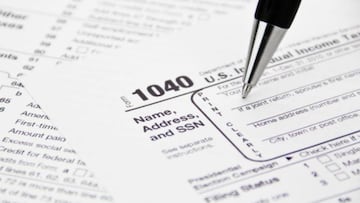Are alimony or separate maintenance payments tax deductible? Where you should include it
Depending on when the legal separation or divorce agreement was finalized will affect whether the payments must be reported on a tax return.

Legally separating or getting divorced can bring with it changes to how you file your taxes, like what your filing status is. Also, depending on when the legal agreement was finalized it will also affect whether the payments must be reported on a federal tax return. Each state has its own filing requirements for alimony or separate maintenance payments but here we’ll look at those for your federal tax filing with the Internal Revenue Service.
The Tax Cuts and Jobs Act of 2017 (TCJA) changed the taxation rules for alimony and separate maintenance payments. Those laid out in agreements dated 1 January 2019 or later, are no longer counted as a deduction by the payer nor income by the receiver. The same applies to agreements that were changed after 2018 where it is “expressly stated” in the modification that the payments are not “deductible to the payer or includible in the income of the recipient.” These filers do not need to report the payments on their income tax returns.
However, payments that are stipulated in agreements prior to 1 January 2019 must be reported by both parties on their tax returns or the filer may incur fines and penalties from the IRS. The process is relatively simple, but each party fills out a different section on their Schedule 1 (Form 1040) to reflect whether it should be deducted from income or added to it. Here we take a look…
Where to include alimony or separate maintenance payments on tax returns
Filers that must report alimony payments or separate maintenance have to fill out a Schedule 1 (Form 1040) for ‘additional income and adjustments to income’. That information will then be reflected on your Form 1040 on line 10b.
For the person making the payments, you will need to enter the amount of the money paid during the year in Part II, Adjustments to Income, on line 19a ‘Alimony paid’. It’s important you include the recipient’s Social Security number (SSN) on line 19b, failure to do so could result in a $50 penalty. As well, the deduction may be disallowed the IRS warns. On the following line, 19c, you need to write the date of the original agreement.
If you paid alimony or separate maintenance to more than one person you will need to attach a statement with the amount paid to each additional person as well as their SSN or ITIN. For additional information check Publication 504 in the section on ‘Alimony’.
For the person receiving the alimony payments or separate maintenance, you will need to enter amount of the money received during the year in Part I, Additional Income, on line 2a ‘Alimony received’. On line 2b you must enter the date of the original agreement.
In the event that you receive alimony and/or separate payments from more than one person, the IRS instructs that you write the information for the one that you receive the most income from on the Schedule 1 (Form 1040) and then attach a statement listing the date of the other agreements.






